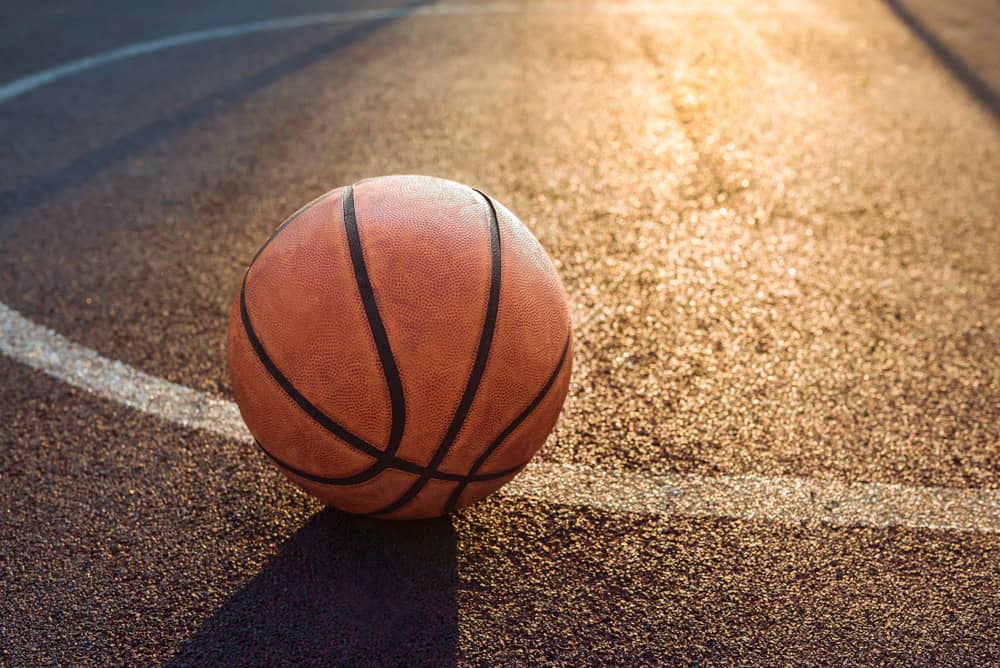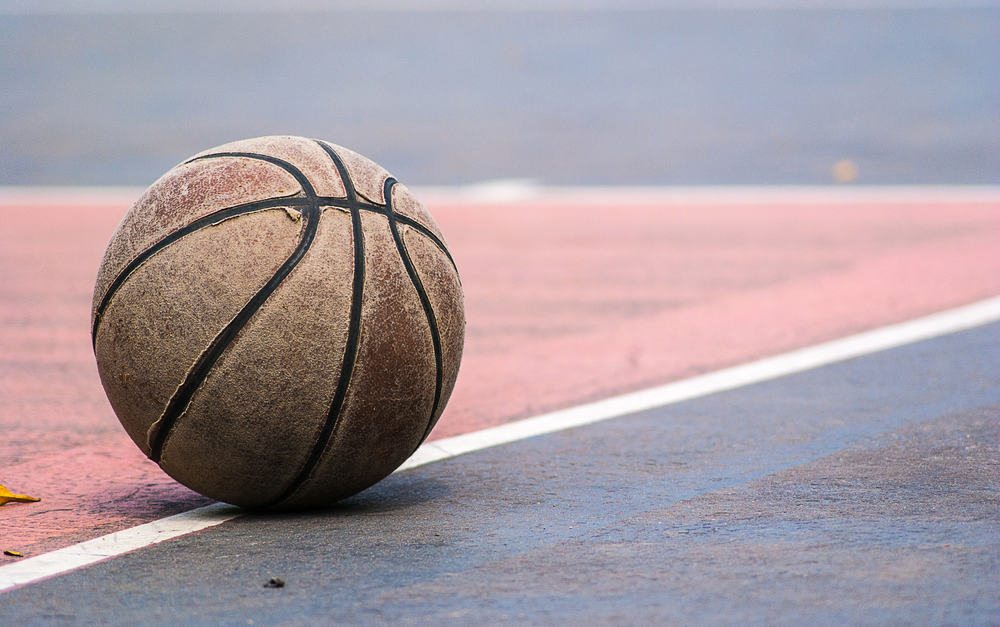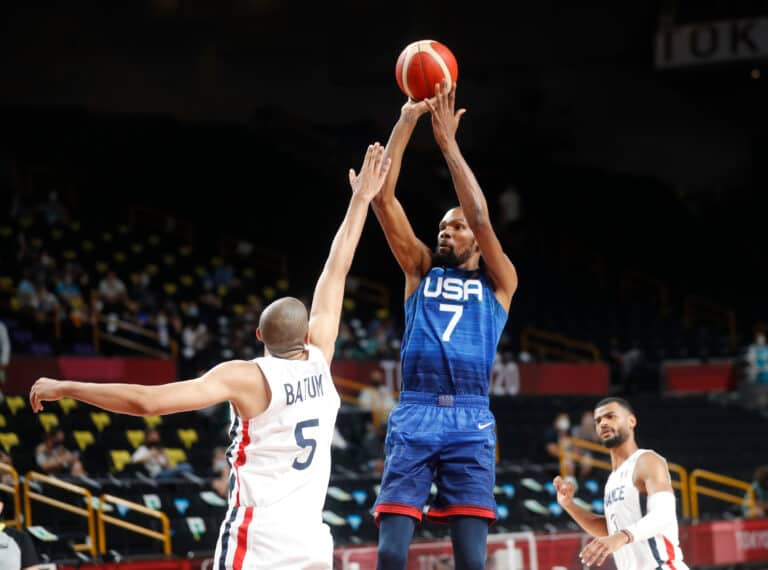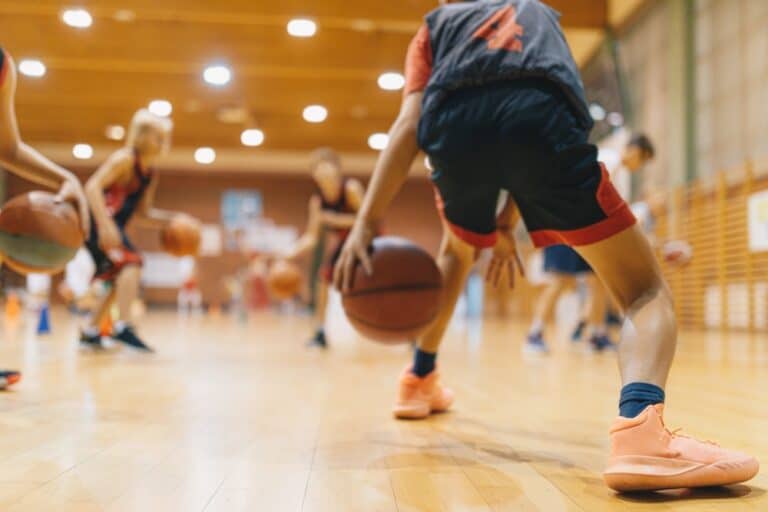How Long Does A Basketball Last? (All You Need To Know)
Basketball is a fun activity for people of all skill levels and ages, thanks to its global appeal. However, aside from the exceptional talents displayed by many notable players, basketballs come in various sizes and materials, and many individuals have questioned the durability of a basketball. That said, how long does a basketball last?
When properly cared for and used for about one to two hours each day, the average retail basketball can last up to six months before the grip fades and the material begins to deteriorate. However, higher-end basketballs are known to last 12 to 18 months when used daily for indoor or outdoor play.
Another factor to consider is the material of the basketball, with leather, composite, and rubber being the three most common types of materials used for basketballs. Of course, each material type has its own court preferences and longevity. With that in mind, let’s look at how long each basketball type will last and how long they may be used.
How Long Can A Basketball Be Used?
The perfect basketball selection involves more than most people realize. First, you must know the right ball type to purchase if you want your ball to last. Basketballs may appear to last a lifetime, but based on ones used to play with at recreation facilities, they do not.
Several variables determine a basketball’s longevity, and with the correct maintenance, basketballs may survive for a very long period. For example, an outdoor basketball can last about six months to a year, assuming you play daily for a few hours.
Under the same conditions, indoor basketballs ought to last longer. But, of course, no matter what court you play on, your basketball will last longer if you play less frequently, like once a week.
The fastest way to increase your basketball’s lifespan and avoid replacing it too frequently is to take proper care of it. Additionally, it will improve your game since you’ll keep the ball’s grip and bounce, allowing it to continue functioning as a basketball should. That said, here’s what you should know about each material type.
The Different Materials Used For Basketball Balls
The first step to acquiring a basketball that will last you long is choosing the suitable material from which your ball is made. It would be best if you first decided whether you would like to play indoors or outdoors, following the three different material types.
1. Leather Basketballs
Although leather has a reputation for being durable and pricey, a leather basketball needs to be treated carefully. Leather basketballs are only suitable for use on indoor courts. By ripping the material apart or flattening the raised areas, materials like gravel and concrete can harm your ball and eventually ruin its grip.
If only used indoors and treated carefully during transportation, leather balls can last over a year when used daily. However, several people claim that their leather balls lasted over five years while only using them for indoor play once or twice a week for an hour. Some Molten and Wilson basketballs serve as two superb instances of leather basketballs.
2. Composite/Synthetic Basketballs
Composite leather balls are less expensive, last longer, and feel worn-in and soft right out of the box. In addition, they don’t dry out as much as their leather brethren, making them suitable for indoor and outdoor play—although driveways will eventually get to them.
A basketball made of synthetic leather would survive for roughly 8 to 9 months if utilized daily for an hour or two. However, its lifespan would be shortened to 7 to 8 months if used every day for two to three hours. Given this usage, the user is expected to provide sufficient care.
Make sure it is not deflated, that the pressure is kept, that there are no holes, etc. Finally, Spalding and Wilson make some of the best composite basketballs.
3. Rubber Basketballs
The inexpensive choice is rubber basketballs, often designed for outdoor courts and referred to as outdoor basketballs. They could provide more durability and bounce and might be a helpful alternative for leisure play or newer players just starting.
A rubber basketball’s lifespan is influenced by how long and frequently it is used. For example, the basketball will last around five to six months if the user uses it for one to two hours daily and takes good care of it.
However, even a decent basketball lasts only four to five months if the time commitment is two to three hours daily. Two excellent examples of rubber basketballs are found in Spalding and SportimeMax basketballs.
How To Take Care Of Your Basketball?
Every basketball player knows the importance of having a firm grasp on the ball. But perhaps just as crucial is learning how to take care of it. A basketball that is taken care of correctly may last much longer than one that isn’t, which can be essential to your game’s success. Therefore, keep these recommendations in mind when you take care of your basketball.
Select The Right Ball For The Right Court
Leather balls are best suited for only indoor play. Keeping the ball in good condition means avoiding the temptation to dribble it outside on pavement or any rough surfaces.
Basketballs made of rubber or composite materials are less likely to sustain the same damage and are better suited for use on rough outdoor surfaces. Finally, the life of your ball may be significantly extended by using the proper ball for the court you are playing on.
Keep Your Basketball Clean
Dust and debris may eventually find their way into the cracks in your ball. In addition, dust will make your ball slick if it isn’t cleaned up, making it more difficult to pass, shoot, and dribble. Regularly wipe your ball down with a cloth or dry towel to prevent this.
Use a cloth soaked in a solution of water, mild detergent, or leather shampoo to clean a leather basketball thoroughly. But make sure to dry it right away with a clean towel. A leather ball’s surface might be ruined if left damp.
Basketballs Are Not Entirely Weather-Proof
Your basketball will eventually be exposed if you leave it out in the weather for too long. Therefore, neither indoor nor outdoor basketballs should be kept outside in harsh weather, rain or sun, heat or cold.
Any amount of moisture can degrade your ball’s quality and cause it to lose its grip. Extreme temperatures can also deform your ball’s shape and degrade performance. In addition, your ball may change color if you leave it in the sun.
Be Aware Of The Playable Surfaces
When using and storing your basketball, be aware of your surroundings since other items may cause harm or change the form of your ball. For example, in outdoor games, keep the court clear of anything the ball could bounce off of by setting up a barrier around the court. Both sharp objects and bodies of water have the potential to injure the ball.
Keep your basketball in a basketball bag or another cold, dry location. Make sure nothing is pressing on it or sitting on top of it. Your ball’s form may alter as a result. For example, spending too much time storing a ball on a rack might turn it ovular rather than spherical.
Taking good care of your ball might help you improve your game, whether you’re trying to play casually in your driveway or practice for the pros. In addition, these pointers might help you keep your basketball in good condition so you can play well for years to come.
Ensure Your Basketball Is Pumped Up
Basketball players should not simply concentrate on the sweet area at the backboard. There is a sweet spot for air pressure as well. Holding the ball above your head and letting it fall is typical for testing air pressure – you’re good to go if it returns to a height about your chest.
The likelihood of your ball producing lumps might be increased by playing with an overinflated ball or pumping it too quickly. Likewise, an over-inflated ball’s chances of tearing might rise if you slam it to the ground or repetitively bounce it against a wall. However, a ball with inadequate air pressure may be all but unplayable.

Conclusion
Basketball is a popular sport worldwide, and the ball is its most crucial component, aside from skill. Therefore, to increase the ball’s lifespan, it is vital to learn how to handle it and where to play. Whether a basketball is composed of leather, composite material, or rubber, with proper care, it may last anywhere from over five months to a year or even longer.
References
- https://en.wikipedia.org/wiki/Basketball_(ball)
- https://www.gq.com/story/how-to-buy-a-basketball
- https://sportstalkflorida.com/nba/nba-news/how-does-the-nba-handle-its-game-balls/
- https://www.reddit.com/r/Basketball/comments/cqkel9/how_long_do_spalding_nba_balls_last/
- https://protips.dickssportinggoods.com/sports-and-activities/basketball/complete-guide-basketballs







